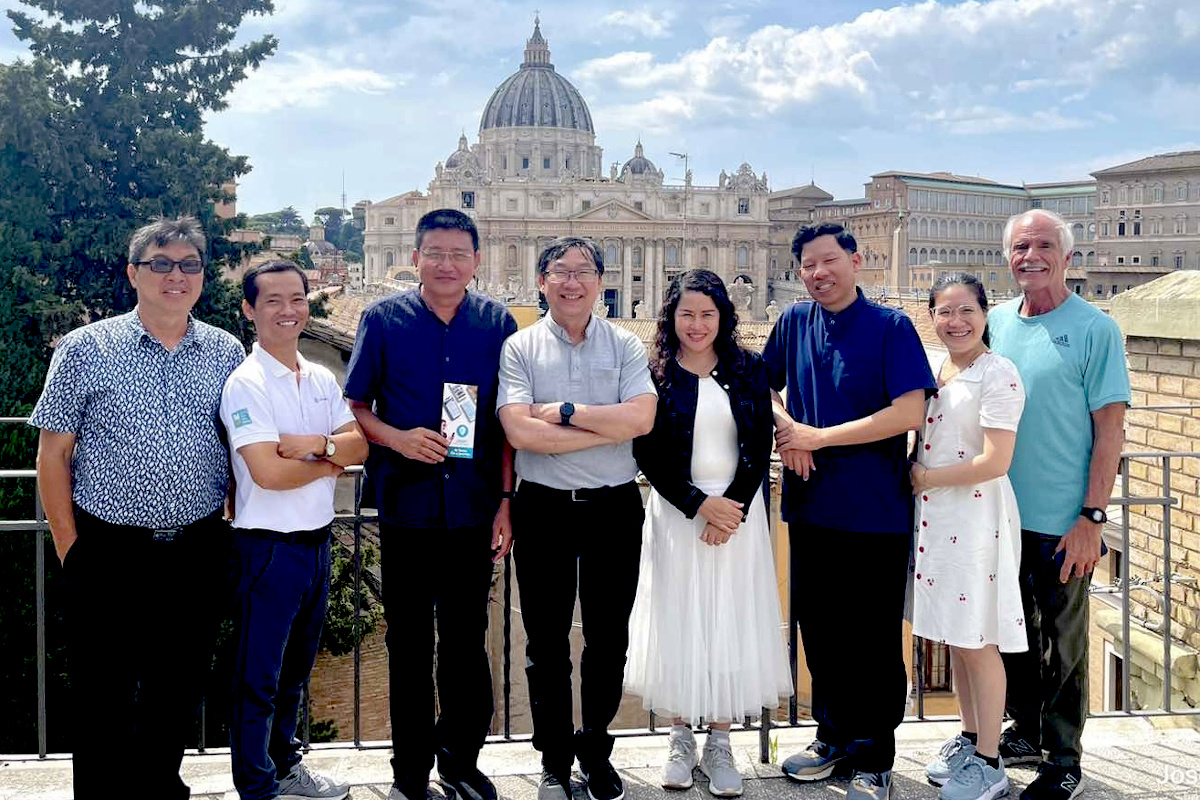
In “The Practice of Prayer”, St Bonaventure, one of Francis of Assisi’s early Franciscan followers, comments that God gave human beings our five senses–seeing, hearing, touching, smelling, and tasting–so we can know and thus love Him all the more. When the Vietnam Center for Ignatian Spirituality (CIS) took our long-awaited pilgrimage to Italy, we learned the great truth in Bonaventure’s statement. During the course of 10 days, we found ourselves constantly amazed, at times even stunned, by the beauty we saw, the sounds we heard, and the sensations we experienced through our senses. We were truly grateful for the abundance of gifts we received.
Since our foundation in 2019, we have eagerly anticipated this spiritual pilgrimage. Our team comprises both Jesuit and lay members, who share a deep interest in learning more about Ignatius’ life and work during his time in Rome, where he spent the last 17 years of his life. Finally, in May, we fulfilled our long-awaited dream and more, as we were also fortunate to visit Milan and Assisi on our way to Rome. We were blessed to have our friend and colleague, Fr Julio Giulietti SJ, who organised and guided us on this journey.
Milan
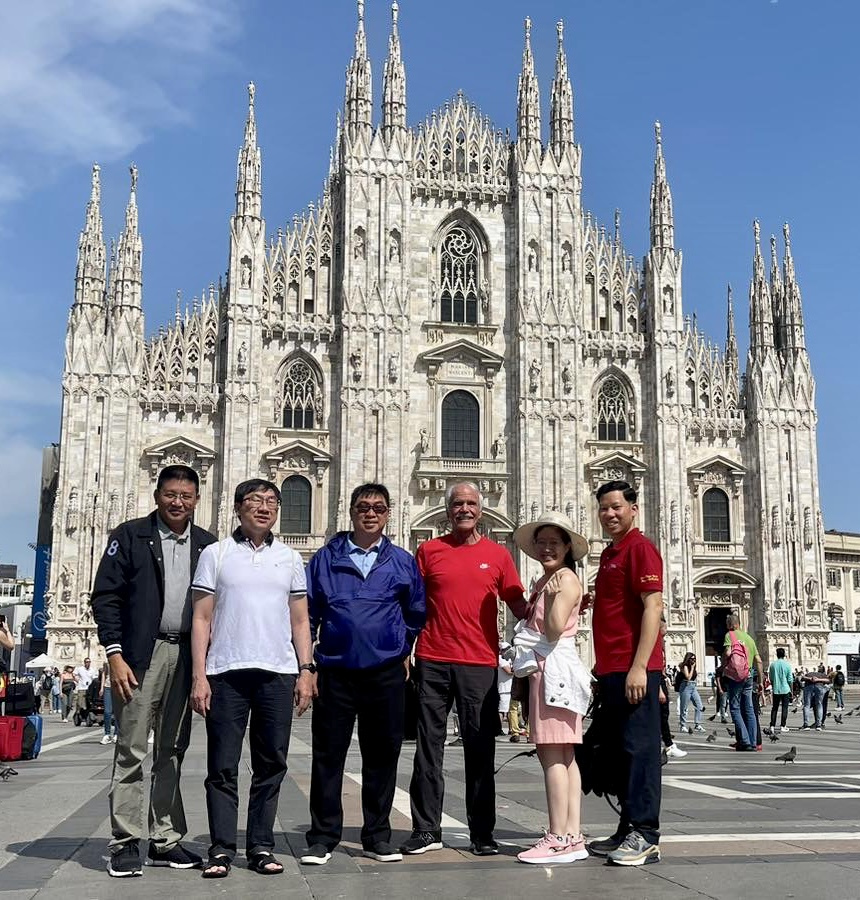
In Milan, we retraced the footsteps of Jesuit Cardinal Carlo Maria Martini, who devoted 22 years of his life to serving the world’s largest Catholic diocese. He was called the “cardinal of non-believers” because of his remarkable ability to communicate meaningfully with people of all faiths and religious “nones”. As Christianity is a minority in Vietnam, we were particularly interested in learning more about his unique approach to ministry. We were awestruck by the beauty of Milan’s cathedral, Il Duomo, with its stunning white stone facade, and deeply moved by Cardinal Martini’s care for young adults. We took a moment to offer our prayers for his intercession before Christ on our behalf.
On our second day in Milan, amidst the hustle and bustle of so many new sights and sounds, we found ourselves happily “lost” in the seemingly endless galleries of La Brera, Milan’s most popular museum dedicated to Renaissance art and the life of Jesus. La Brera was once the site of the esteemed Jesuit college of Milan until the Suppression in 1773. Today, it houses the main art school of the city. As we wandered through the galleries, our eyes were captivated by the spiritual depth of a style of art we had never seen before. Despite the crowds, the galleries were surprisingly quiet as visitors were awed by the beauty before them. Mr Tri, a CIS benefactor who joined us on the pilgrimage, remarked: “I cannot comprehend how human beings can produce images of such colour, vitality, and depth that even after 500 years, their work still moves my soul to such depths.”
We concluded our day by experiencing the taste and aroma of Italy. In Vietnam, our exposure to Italian cuisine is mainly limited to pizza! In Milan, however, our taste buds were tantalised by the flavours of “cucina Milanese”, which we enjoyed in the local restaurants.
Assisi
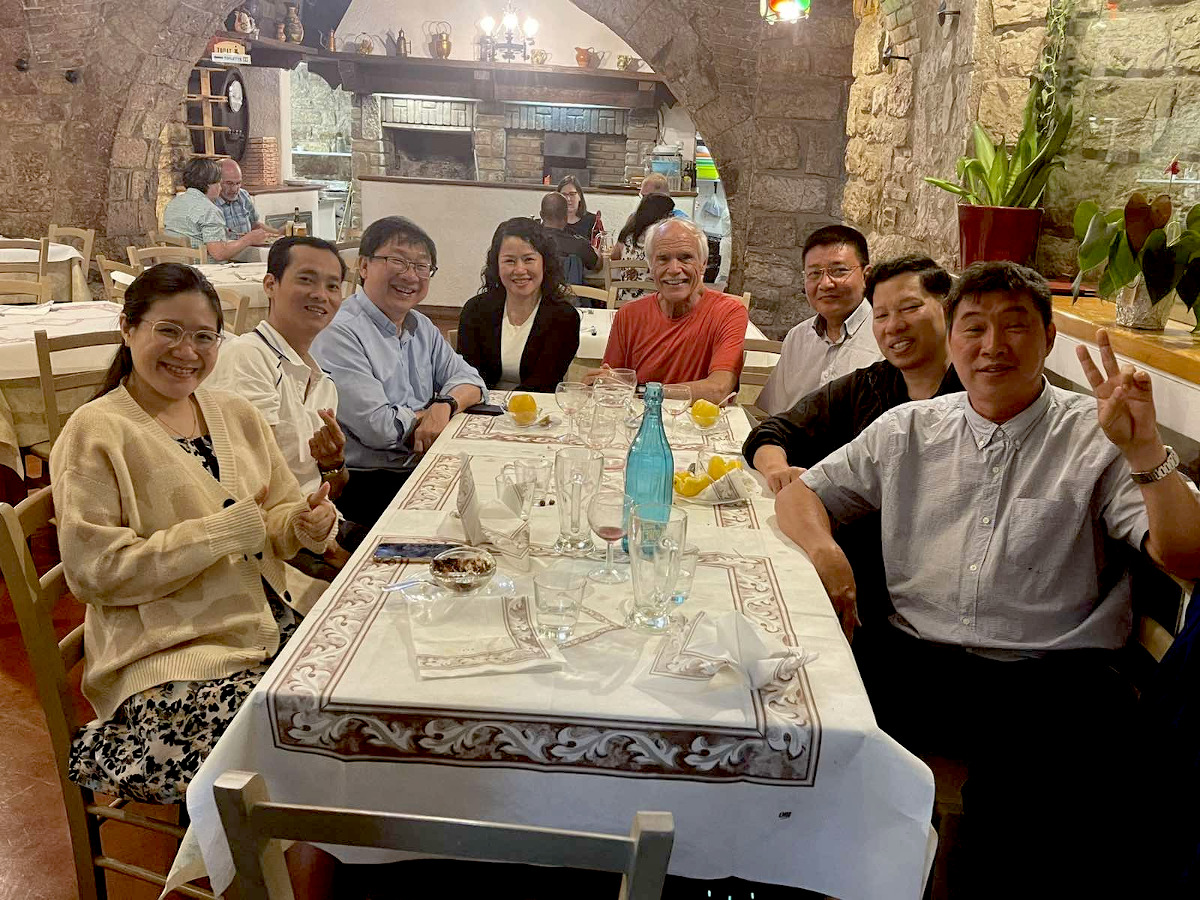
Upon arriving in Assisi, we were warmly welcomed by the ecumenical community of the Graymore Sisters at St Anthony’s Guest House. Assisi is nestled on a hill overlooking the vast Umbrian valley teeming with green vegetation, accompanied by the sounds of birds and church bells. Walking the stone streets of this 13th-century town, one sees everywhere the celebration of their greatest hero, St Francis of Assisi. All streets and alleys lead to the magnificent Basilica of St Francis, where he has rested peacefully since 1226 in a simple stone coffin positioned at eye level, alongside the first three Franciscan friars. Pilgrims from across the world sat or knelt in meditation and prayer. Occasionally, we heard the quiet sound of weeping as some pilgrims sought the intercession of this man, who was deeply in touch with God’s mercy.
A pilgrimage differs from religious tourism essentially in two ways. Firstly, each pilgrim knowingly seeks to experience something of God that is new and life-changing. Secondly, every pilgrim agrees to share with others on the journey the graces and insights they are receiving. We did this exercise daily before heading out to encounter whatever “new” was in store for us. We discovered we were having similar experiences and emotions, yet we responded differently to them according to our own life stories and personal wounds. Listening to each other’s experiences deepened our appreciation for how the Holy Spirit was moving within us.
Although Ignatius of Loyola lived 300 years after Francis, there are aspects of Franciscan spirituality clearly evident in the Spiritual Exercises, especially Francis’ worldview found in the Principle and Foundation, and his emphasis on mercy and forgiveness evident in the First Week of the Spiritual Exercises. Ignatius was introduced to these realities at Manresa, where a Franciscan accompanied him while “on retreat” for 11 months. It felt good to learn that our own Ignatian spiritual richness contains flavours from the spirituality of the world’s most beloved saint!
No one can be in Assisi and not hear about St Claire, who sought to learn from Francis how to be of service in the world. Through Francis’ guidance, Claire came to discover that her vocation was to found a community of women at the service of those whom no one cared for. Until today, her Little Sisters of the Poor are engaged around the world, ministering to the very people whom society has forgotten and abandoned, just as Claire and her sisters did.
Rome
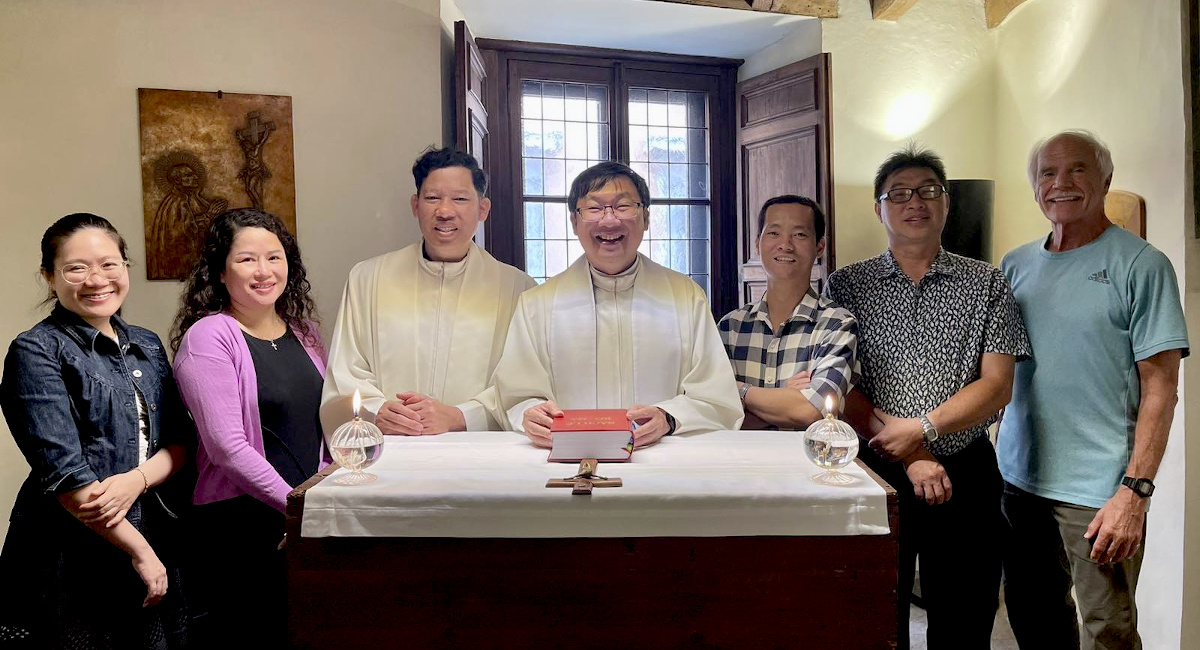
Leaving the tranquility of Assisi behind and arriving at the bustling “Stazione Termini” in Rome was a shock to our senses! The Eternal City is eternally busy with tourists, pilgrims, and local people working and living in one of Europe’s greatest cities.
Fr Francesco Pecori Giraldi SJ, the Rector of the Gesu Church Community, greeted us with genuine hospitality, which continued throughout our five-day stay in the guest rooms on the top floor of the Jesuit Community of the Gesu Church, the mother church of the Society of Jesus. Fr Francesco gave us a stunning tour of the Gesu, where we witnessed how the visual arts commemorate Jesuit history and inspire people to worship and honour Christ and the Trinity.
Our time in Rome was marked by numerous memorable experiences, including visits to the Basilica of St Peter and other renowned sites in and around Vatican City. Especially striking was the ceiling artwork in the Church of St Ignatius, painted by the 16th-century Jesuit Brother Andrea Pozzo. The massive ceiling is a celebration of the Incarnation of the Son of God, who beckons Ignatius–and all of us–to be part of the healing and progress of the world.
Out of so many meaningful sites, our visits to the Second Century Catacomb of Santa Priscilla and our contemplation of Caravaggio’s masterpiece, “The Calling of St Matthew”, in the Church of San Lorenzo stand out. Our leisurely stroll through Rome, culminating in the Spanish Steps, was a delightful experience as well.
As a team engaged in Ignatian spirituality, we greatly benefited from a conversation at the Jesuit Curia with Fr Joseph Christie, Secretary for Jesuit Higher Education, and his lay colleague, German Muñoz. With his global perspective and appreciation of Jesuit education, Fr Christie gave us an excellent overview of the challenges and graces of this very important ministry of the Society.
On the morning of our departure from the Eternal City, we gathered in the chapel in the Rooms of St Ignatius to celebrate the Eucharist, allowing ample time for mutual sharing. It was a meaningful way to end our pilgrimage to Italy and to prepare for our work at home–infused with renewed understanding, enthusiasm, and vitality for Ignatian Spirituality
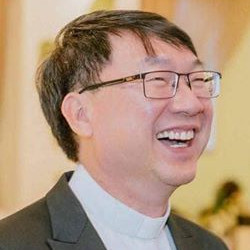 Fr Dominic Nguyen Duc Hanh SJ is the Director of the Vietnam Center for Ignatian Spirituality.
Fr Dominic Nguyen Duc Hanh SJ is the Director of the Vietnam Center for Ignatian Spirituality.
